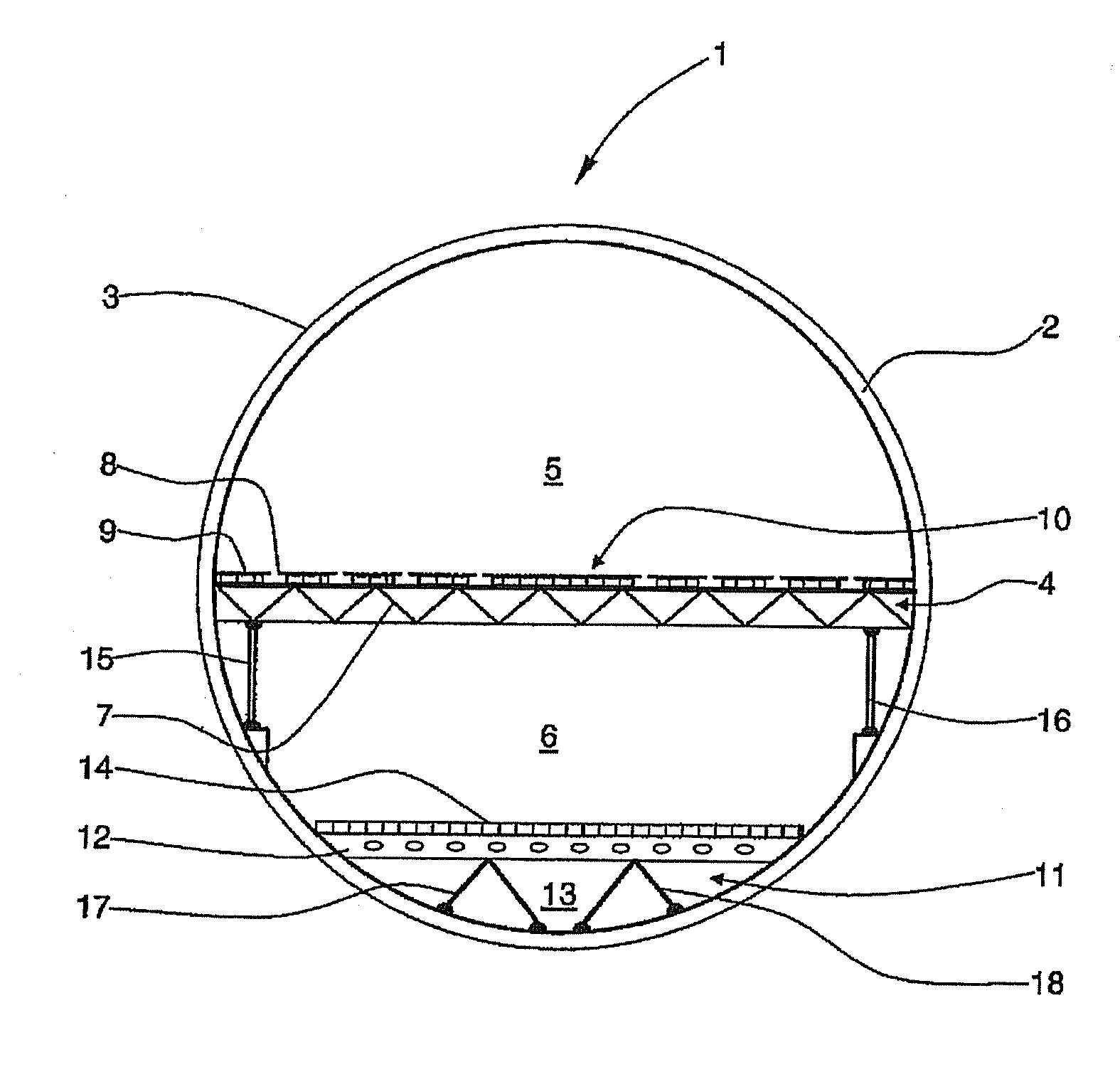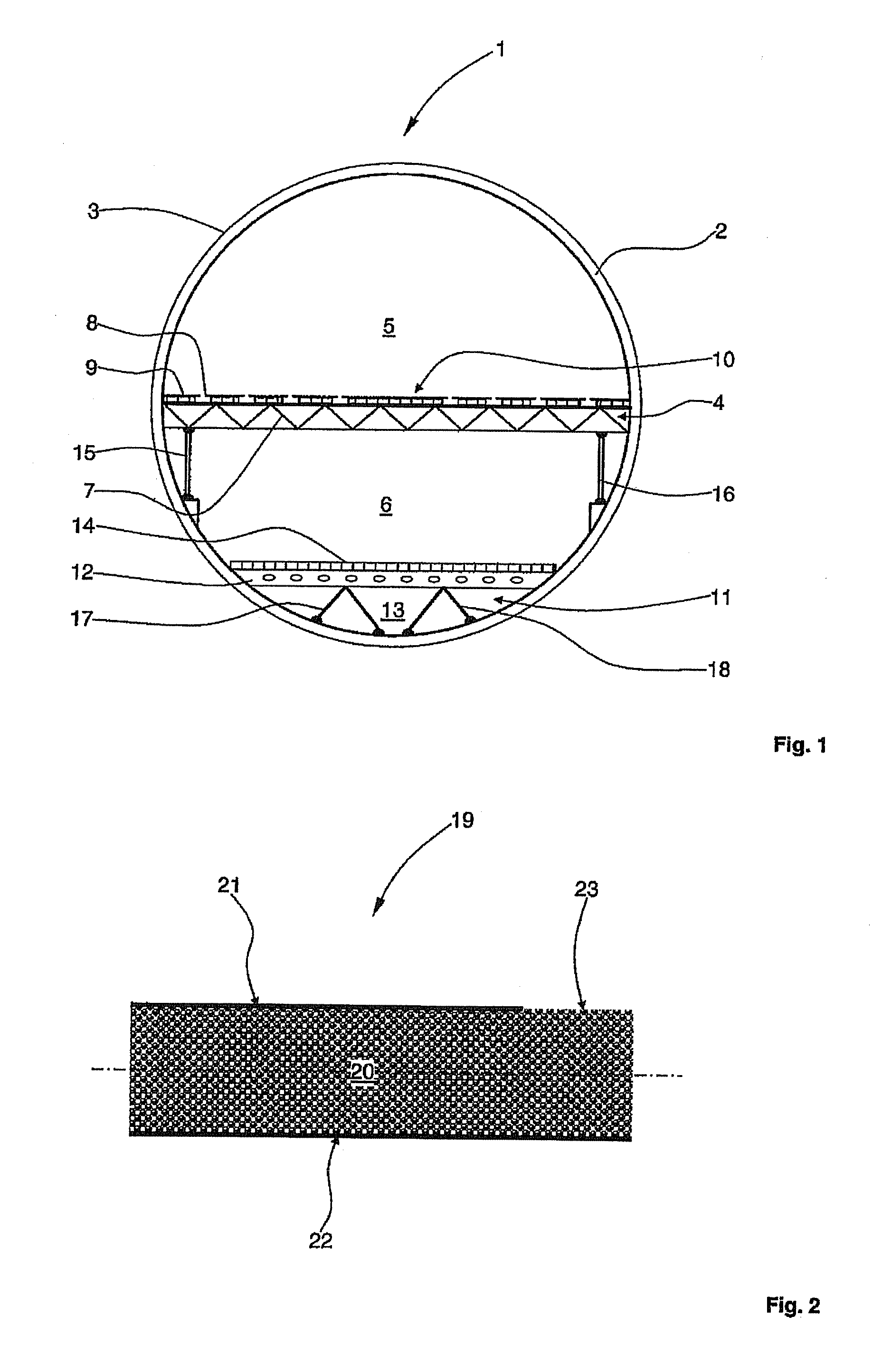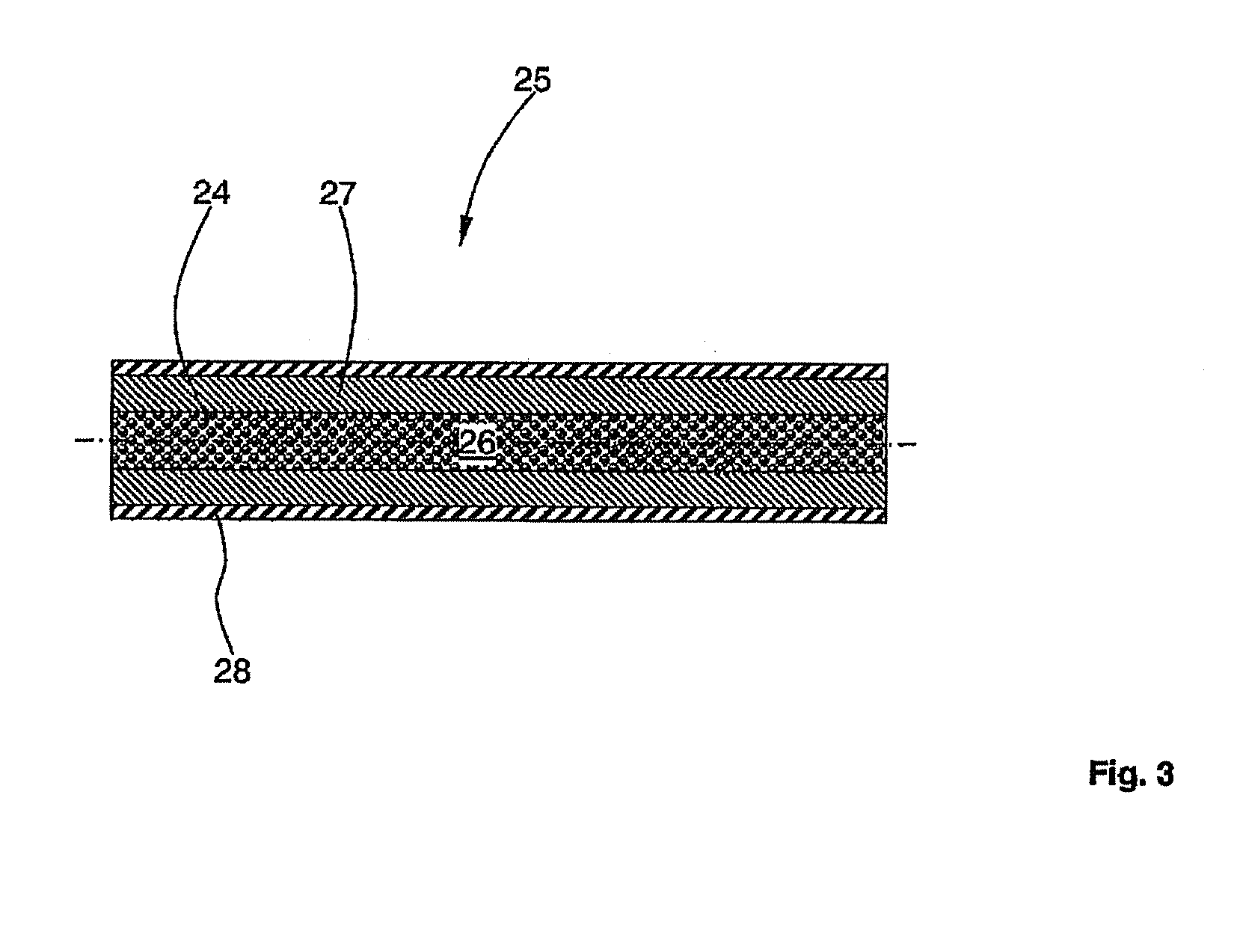Rod for supporting components in a fuselage cell structure of an aircraft
a technology for supporting components and fuselage cells, which is applied in the direction of fuselages, yarn, transportation and packaging, etc., can solve the problems of increasing the repair cost of known cfrp components, difficult to detect cracks and/or delaminations, and virtually impossible open repair, etc., to achieve high peak crash load and accident load
- Summary
- Abstract
- Description
- Claims
- Application Information
AI Technical Summary
Benefits of technology
Problems solved by technology
Method used
Image
Examples
Embodiment Construction
[0027]FIG. 1 is a cross-sectional view through a fuselage cell structure of an aircraft. A fuselage cell structure 1 of an aircraft comprises a large number of annular formers, of which one annular former 2 is provided with a reference numeral. The fuselage cell structure 1 is completely covered by an outer skin 3 or outer skin segments. The fuselage cell structure 1 further comprises a floor frame 4 which divides the fuselage cell structure 1 into a passenger cabin 5 and a generally smaller hold 6 arranged therebelow. The floor frame 4 is constructed with a large number of crossbars 7 which are each arranged in a plane transverse to the longitudinal direction of the aircraft, spaced approximately uniformly from one another and successively. On the crossbar 7 a seat rail 8 extends perpendicular to the drawing plane, i.e. parallel to the longitudinal axis of the aircraft, and parallel to a large number of further seat rails which, on the one hand, reinforce the floor frame 4 and, on ...
PUM
| Property | Measurement | Unit |
|---|---|---|
| melting point | aaaaa | aaaaa |
| distance | aaaaa | aaaaa |
| weight | aaaaa | aaaaa |
Abstract
Description
Claims
Application Information
 Login to View More
Login to View More - R&D
- Intellectual Property
- Life Sciences
- Materials
- Tech Scout
- Unparalleled Data Quality
- Higher Quality Content
- 60% Fewer Hallucinations
Browse by: Latest US Patents, China's latest patents, Technical Efficacy Thesaurus, Application Domain, Technology Topic, Popular Technical Reports.
© 2025 PatSnap. All rights reserved.Legal|Privacy policy|Modern Slavery Act Transparency Statement|Sitemap|About US| Contact US: help@patsnap.com



